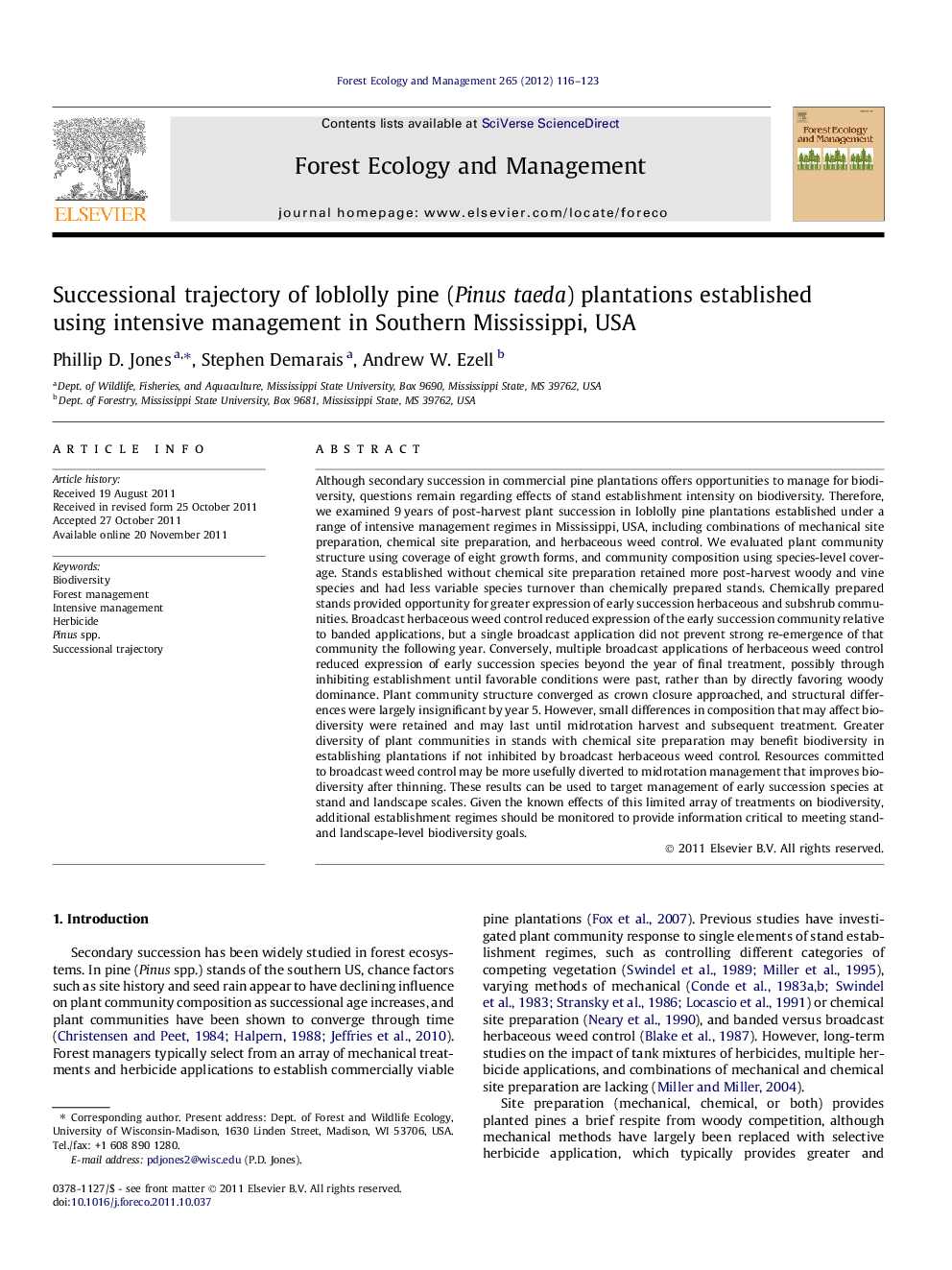| کد مقاله | کد نشریه | سال انتشار | مقاله انگلیسی | نسخه تمام متن |
|---|---|---|---|---|
| 87564 | 159256 | 2012 | 8 صفحه PDF | دانلود رایگان |

Although secondary succession in commercial pine plantations offers opportunities to manage for biodiversity, questions remain regarding effects of stand establishment intensity on biodiversity. Therefore, we examined 9 years of post-harvest plant succession in loblolly pine plantations established under a range of intensive management regimes in Mississippi, USA, including combinations of mechanical site preparation, chemical site preparation, and herbaceous weed control. We evaluated plant community structure using coverage of eight growth forms, and community composition using species-level coverage. Stands established without chemical site preparation retained more post-harvest woody and vine species and had less variable species turnover than chemically prepared stands. Chemically prepared stands provided opportunity for greater expression of early succession herbaceous and subshrub communities. Broadcast herbaceous weed control reduced expression of the early succession community relative to banded applications, but a single broadcast application did not prevent strong re-emergence of that community the following year. Conversely, multiple broadcast applications of herbaceous weed control reduced expression of early succession species beyond the year of final treatment, possibly through inhibiting establishment until favorable conditions were past, rather than by directly favoring woody dominance. Plant community structure converged as crown closure approached, and structural differences were largely insignificant by year 5. However, small differences in composition that may affect biodiversity were retained and may last until midrotation harvest and subsequent treatment. Greater diversity of plant communities in stands with chemical site preparation may benefit biodiversity in establishing plantations if not inhibited by broadcast herbaceous weed control. Resources committed to broadcast weed control may be more usefully diverted to midrotation management that improves biodiversity after thinning. These results can be used to target management of early succession species at stand and landscape scales. Given the known effects of this limited array of treatments on biodiversity, additional establishment regimes should be monitored to provide information critical to meeting stand- and landscape-level biodiversity goals.
► We study successional trajectories in intensively established stands through year 8.
► Trajectories varied widely through year 3, then rapidly converged with crown closure.
► Mechanically and chemically prepared treatments remained distinct through year 8.
► Effects of 2 years broadcast weed control persisted beyond final application year.
► Varying establishment regimes may provide opportunities to manage biodiversity.
Journal: Forest Ecology and Management - Volume 265, 1 February 2012, Pages 116–123